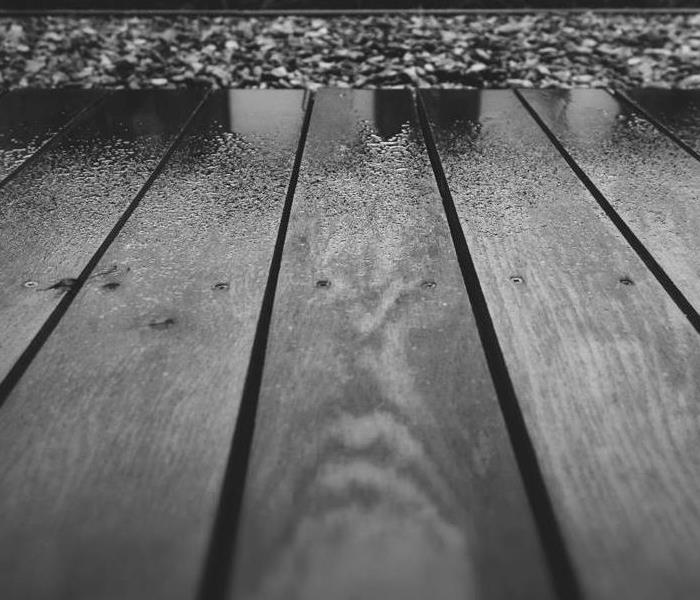What To Do After Water Damage To Your Deck
2/23/2021 (Permalink)
Especially if your wood deck doesn’t have a roof overhead, it bears the brunt of all the elements year-round. While most decks are designed to withstand precipitation and temperature changes, there comes a time when the amount of wear and tear reaches a tipping point, which means your deck can then experience water damage from its exposure to rain, snow, sleet, or ice. Additionally, if your property floods and your deck is submerged for a long period of time, the chances that your deck will experience water damage are fairly high. However, what steps should you take after water damage to your deck occurs?
We’re glad you asked! Moisture can damage your deck in a variety of ways, including but not limited to mold and mildew growth, cracked deck boards, sweeping away hardware like nails and screws, and weakening your ledger board. All of these scenarios require slightly different approaches to resolving the damage, and we’ve laid out exactly what to do in each situation below.
Mold and Mildew Growth
We’ve said it before and we’ll say it again: mold growth is no joke. Mold and mildew can pose effects to your health and safety, leaving you at risk of health effects if left untreated. If your wood deck has mold on it, make sure you either hire a mold remediation professional to get rid of it or treat it yourself with the proper precautions. You may need to replace any decayed wood or permanently wet areas of your deck that promoted the mold growth in the first place, too.
Cracked Deck Boards
Water loves seeping into the crevices and splits in cracked deck boards, which is why they often contribute to water damage to your deck. When the water seeps into your deck boards, they expand, and once they dry, they shrink, which causes your deck boards to crack even further and creates larger splits. This often results in splinters and warped wood. Obviously, these are not properties that you want to find in your deck if you want to use it, so you should make sure to treat the wood on your deck regularly and replace any damaged boards beyond repair.
Missing Hardware
Again, water damage doesn’t always equate to missing hardware on your deck, but water can and usually does loosen and sweep away nails and screws from your deck over time. When hardware goes missing, water can find its way into the holes where it used to belong, which gives it an easier avenue to seep into your deck boards and cause damage. We suggest checking your deck boards on a regular basis for missing hardware and replacing it as well as for mold and mildew growth to avoid water damage when possible.
Weakened Ledger Board
Your deck’s ledger board is what secures your wood deck to your home, and when water surrounds it, this can cause it to weaken, discoloring the siding and sheathing on your home as well as rusting or growing mildew. Water may directly start to enter your home along the ledger board, rotting away the wood and pulling away from the house. If a weakened ledger board isn’t eventually addressed, water damage may cause your deck to collapse, which can result in serious injuries if that occurs when someone is on your deck.
Water damage to your deck is never ideal, but we hope that this article was helpful and gives you an idea of what to do when you notice water damage occurring or signs of it surfacing. Need help getting rid of mold or mildew or simply don’t want to take care of the water damage to your deck yourself? No problem! Our water damage restoration team would be more than happy to help you restore your deck to its original condition. Contact SERVPRO of Belle Meade/West Nashville at (615) 242-9391 at any hour for assistance. This franchise is independently owned and operated.






 24/7 Emergency Service
24/7 Emergency Service
